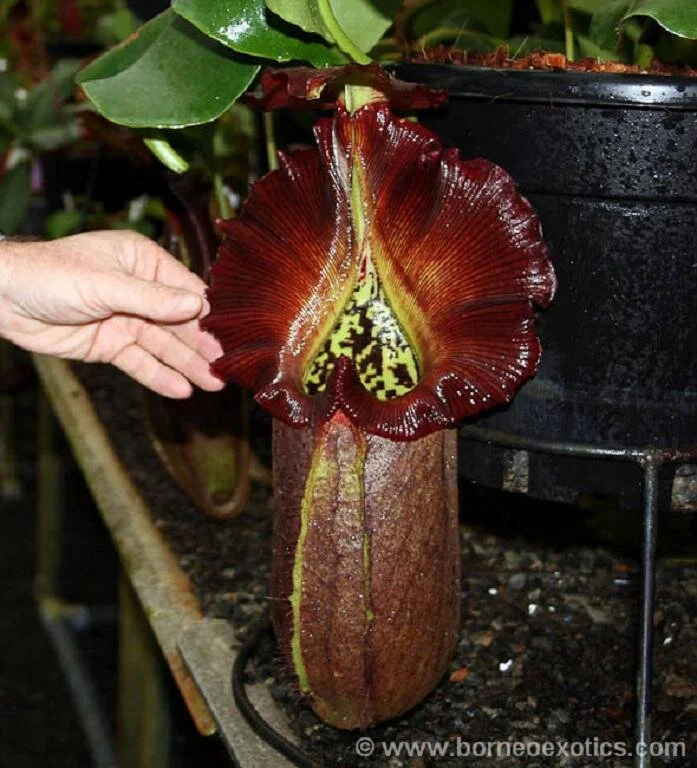Nepenthes robcantleyi
Nepenthes robcantleyi
BE-3517, An iconic species from the Philippines a must in any collection. Fantastic coloration and flared peristome, only a few plants left, unfortunatley prices are very high at the momment, so we reduce our margin significantly.
Here is what Borneo exotics have to say:
In the late 1990s we bred two of the only nine plants known in cultivation of this, one of the rarest of all Nepenthes. The area where seed that gave rise to the original nine plants was collected was devastated by logging activities in the 1990s and Nepenthes robcantleyi is critically endangered in the wild. The female parent of this release has the cultivar name ‘Queen of Hearts’, and is very probably the most photographed Nepenthes in history, having appeared on many of our gold medal winning Chelsea Flower show exhibits.
The male parent named ‘King of Spades’ is darker in overall colouration than the ‘Queen of Hearts’ and has green peristome wings.For some years we labelled these plants as a form of N. truncata, although there were clearly striking taxonomic differences between them and the existing published description of N. truncata. In December 2011, N. robcantleyi was described in the Nordic Journal of Botany as a distinct species in its own right by Dr. Martin Cheek, a senior taxonomist with the Royal Botanic Gardens at Kew. The publication gives the history of this species in cultivation and the reason why the name Nepenthes robcantleyi was chosen.
Over more than 15 years, and starting well before it’s description as a new species, we have raised many tens of thousands of plants originating from seeds produced from 6 of the 9 plants that were raised from the original seed collection. In addition, at one time we kept 550 different clones in microprop and planted out and raised them all. We have seen very little variation in morphology or even in pitcher colouration, which rules out any significant possibility of hybrid origin for this species.


